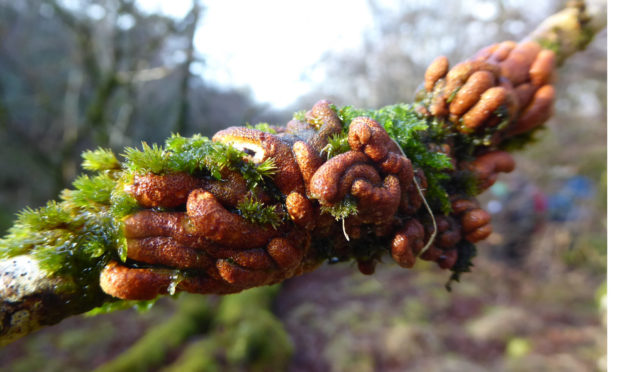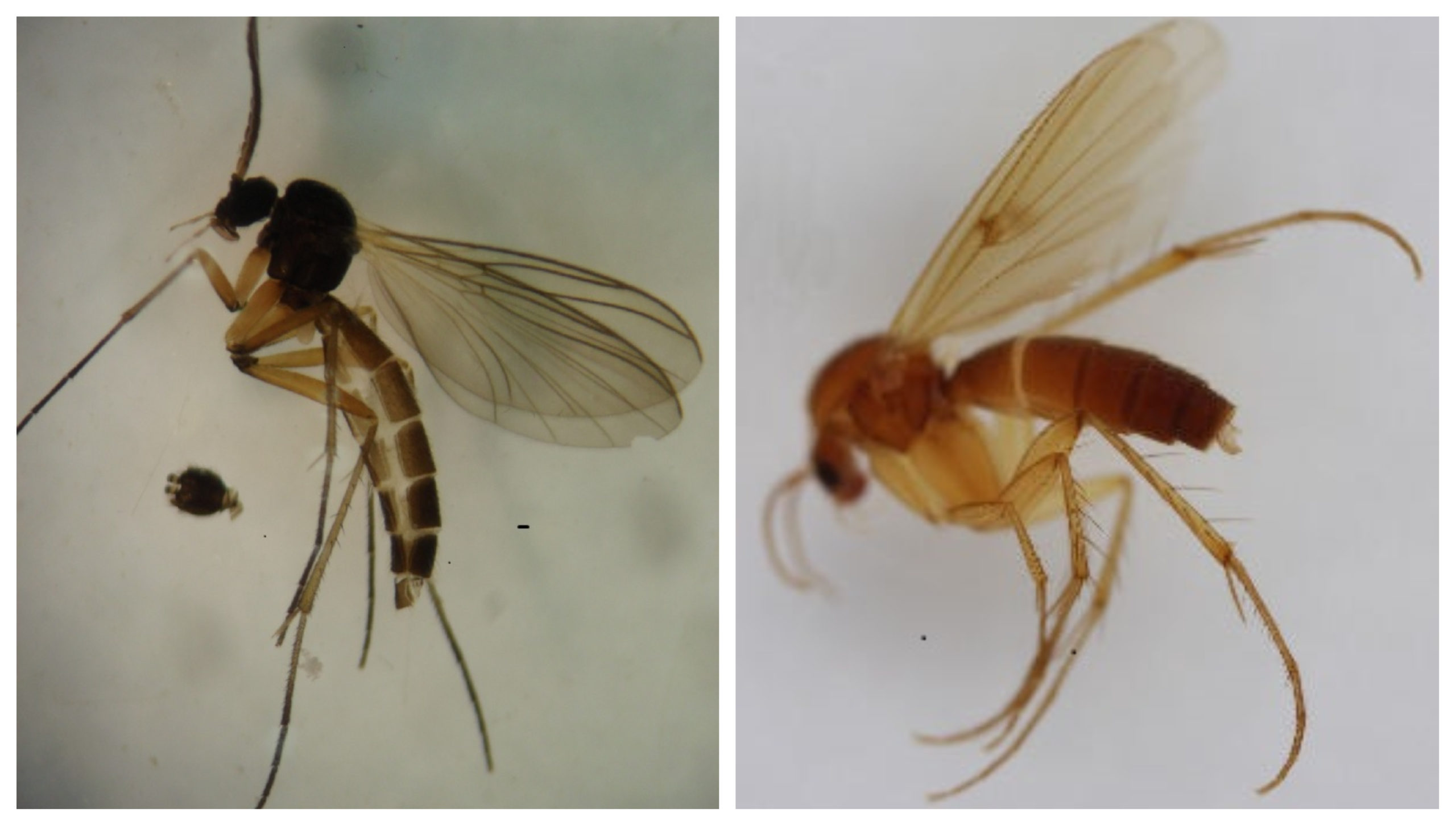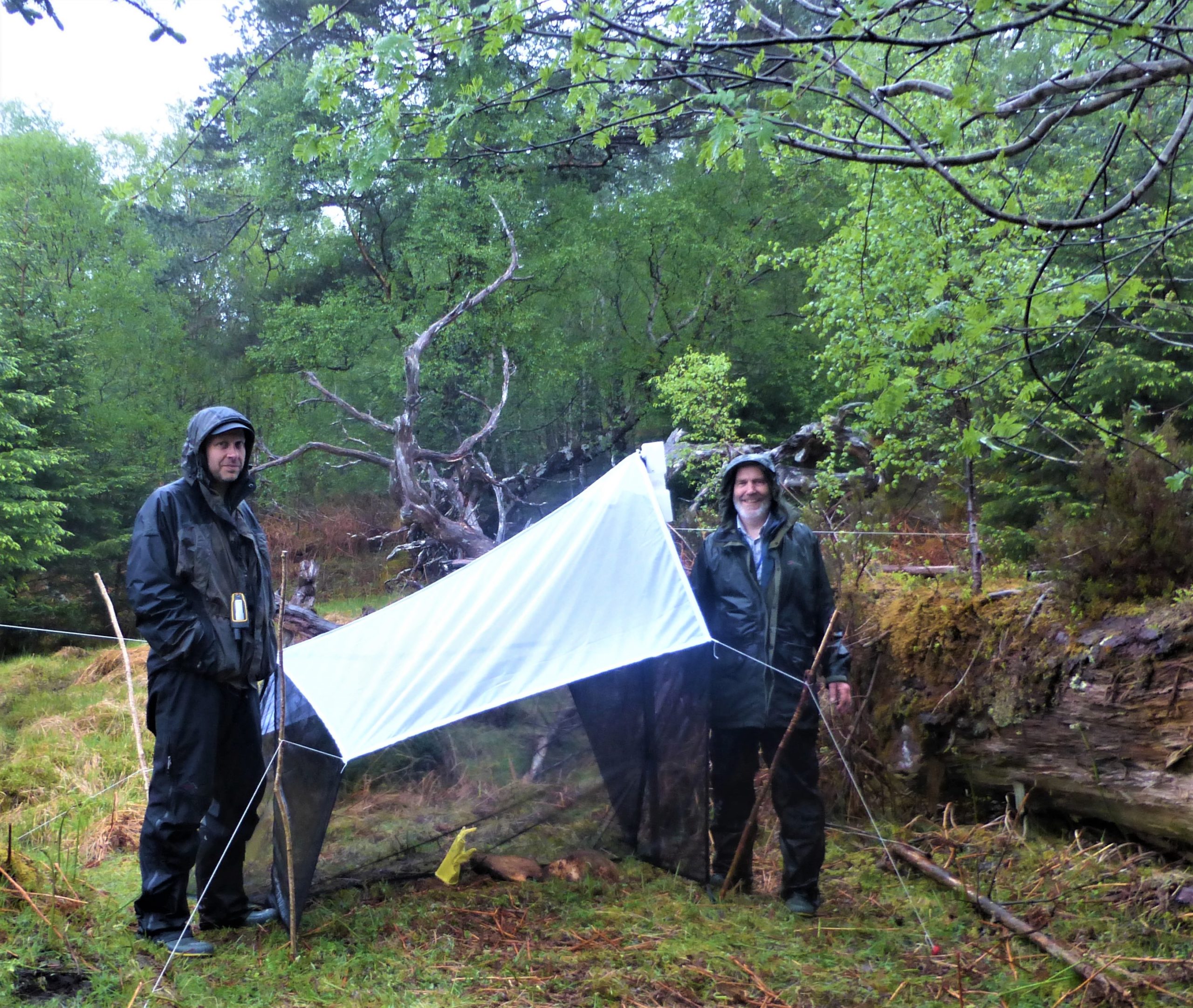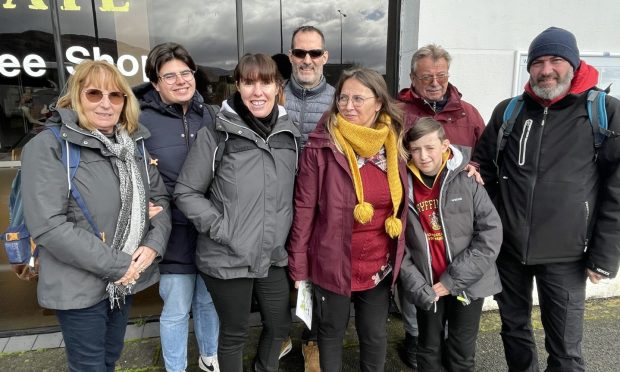A rare rainforest fungus and two tiny fly species – never before seen in the UK – have been discovered at locations along the west coast of Scotland.
The exciting finds come on the back of an insect survey at Loch Arkaig Pine Forest in Lochaber, where the two species of fungus gnat were uncovered, along with the find of hazel glove fungus by naturalists at Dunollie Wood in Argyll.
Fungus gnats are a large group of tiny flies whose larvae feed on mushrooms and fungi.
The two species discovered, Boletina gusakovae and Mycetophila idonea, are more commonly found in European counties, with Mycetophila idonea found in Estonia, Poland, Slovakia, Georgia and Luxembourg.
Boletina gusakovae has been known to be located in Finland and Russia.
The insects were captured in 2018 using Malaise traps, which resemble a backpacker’s tent and funnel flying insects into a collection jar.
The traps were in place for four months with samples still painstakingly being sorted through to identify the insects present.
So far 262 species of flying insect have been discovered.
Surveyor Ian Strachan said he was unsure as to why the flies had never been discovered in the UK before but did offer his theory.
He said: “My guess is that these two have always been here, or at least for a long time, but just not found before.
“This was a very exciting find. It makes all the hours of sorting seem worthwhile.
“It is a very laborious process. It could be several years before all the species are identified – but I am determined to get as many as possible done.”
And near Oban, retired countryside ranger Richard Wesley from Cullipool on the Isle of Luing discovered the hazel glove fungus on a recent visit to Dunollie Wood with Lorn Natural History Group.
Mr Wesley said: “After resting on a log, I looked down and to my surprise spotted a windblown twig with a small sample of hazel glove, as though it had been placed there for me to find.”
The group of explorers then began searching for further spots where the fungus may be present, with Cynthia Grindley and Noelle Odling finding two further samples.
Hypocreopsis rhododendri, the hazel gloves fungus, is a priority species on the UK Biodiversity Action Plan and Scottish Biodiversity List.
George Anderson of Woodland Trust Scotland said: “Hazel glove is an indicator of high-quality temperate rainforest so we are really pleased it has been identified at Dunollie Wood.
“Scotland’s rainforest is just as lush and just as important as tropical rainforest, but is even rarer.”












